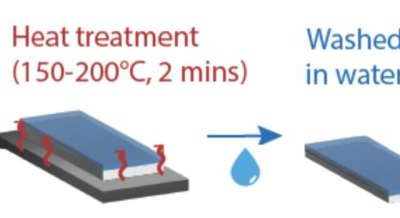Many of the robotic systems developed in the past decades are inspired by four-legged (i.e., quadruped) animals, such as dogs, cheetahs and horses. By replicating the agile movements of these animals, quadruped robots could move swiftly on the ground, crossing long...
TECHXPLORE
Magnesium-doped quantum dots boost perovskite/organic tandem solar cell stability
Photovoltaic (PV) solutions, which are designed to convert sunlight into electrical energy, are becoming increasingly widespread worldwide. Over the past decades, engineers specialized in energy solutions have been trying to identify new solar cell designs and PV...
Wheel-less helical ring-based soft robot can move reliably in all directions
Over the past decades, roboticists have introduced a wide range of systems that can move in various complex environments, including different terrains, on the ground, in the air, and even in water. To safely navigate real-world dynamic environments without colliding...
Artificial nerve with organic transistor design shows promise for brain-machine interfaces
New electrolytes enable safe, stable and fast-charging lithium-metal batteries
In recent years, researchers have been trying to develop increasingly advanced battery technologies that can be charged faster and store more energy, while also remaining safe and stable over time. Lithium-metal batteries (LMBs), which contain a lithium-metal-based...
Legged robots skateboard successfully with reinforcement learning framework
Legged robots, which are often inspired by animals and insects, could help humans to complete various real-world tasks, for instance delivering parcels or monitoring specific environments. In recent years, computer scientists have created algorithms that allow these...
An evolving robotics encyclopedia characterizes robots based on their performance
Over the past decades, roboticists have introduced a wide range of systems with distinct body structures and varying capabilities. As the number of developed robots continuously grows, being able to easily learn about these many systems, their unique characteristics,...
Heat-based stabilization of a conductive polymer simplifies bioelectronics fabrication
Recent advances in the field of materials science have opened new possibilities for the fabrication of bioelectronics, devices designed to be worn or implanted in the human body. Bioelectronics can help to track or support the function of organs, tissues and cells,...
A new on-chip microcomb to synchronize signals in optoelectronics
Optoelectronics are promising devices that combine optical components, which operate leveraging light, with electronics, which leverage electrical current. Optoelectronic systems could transmit data faster than conventional electronics, thus opening new possibilities...
New highly performing Ni-rich cathode active materials for all-solid-state batteries
To support the further advancement of the electronics industry, energy researchers have been trying to develop new battery technologies that could be charged faster, power devices for a greater amount of time and have longer overall lifetimes. Some of the most...










